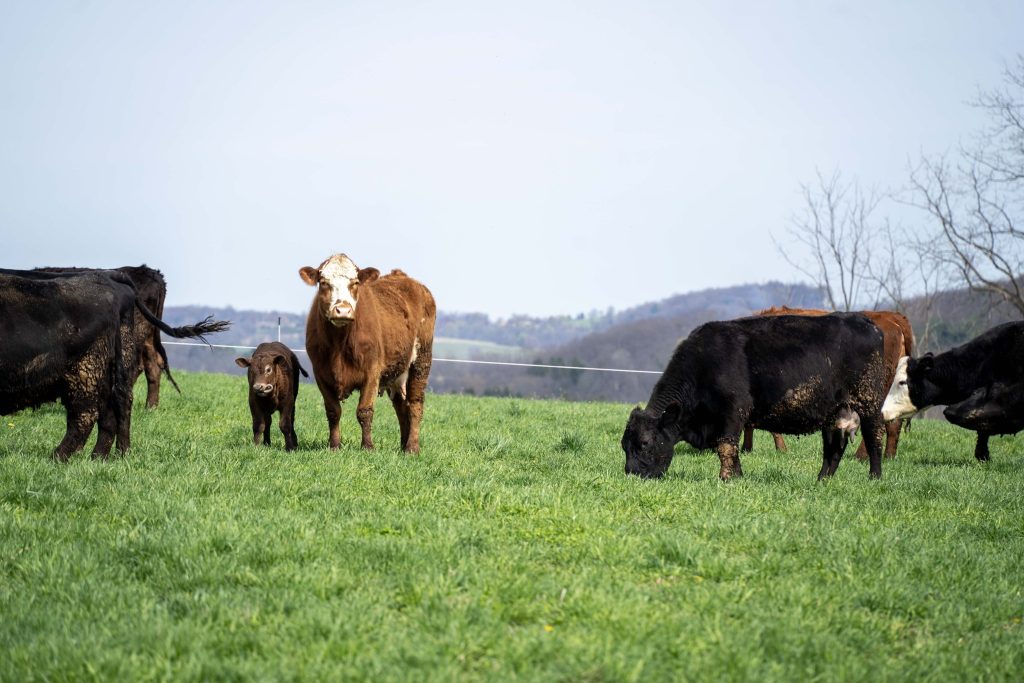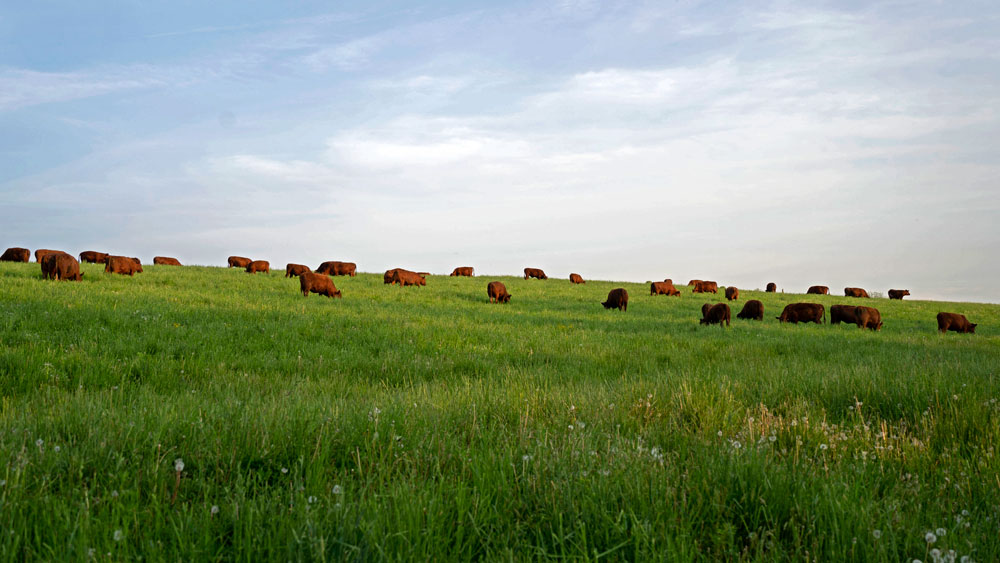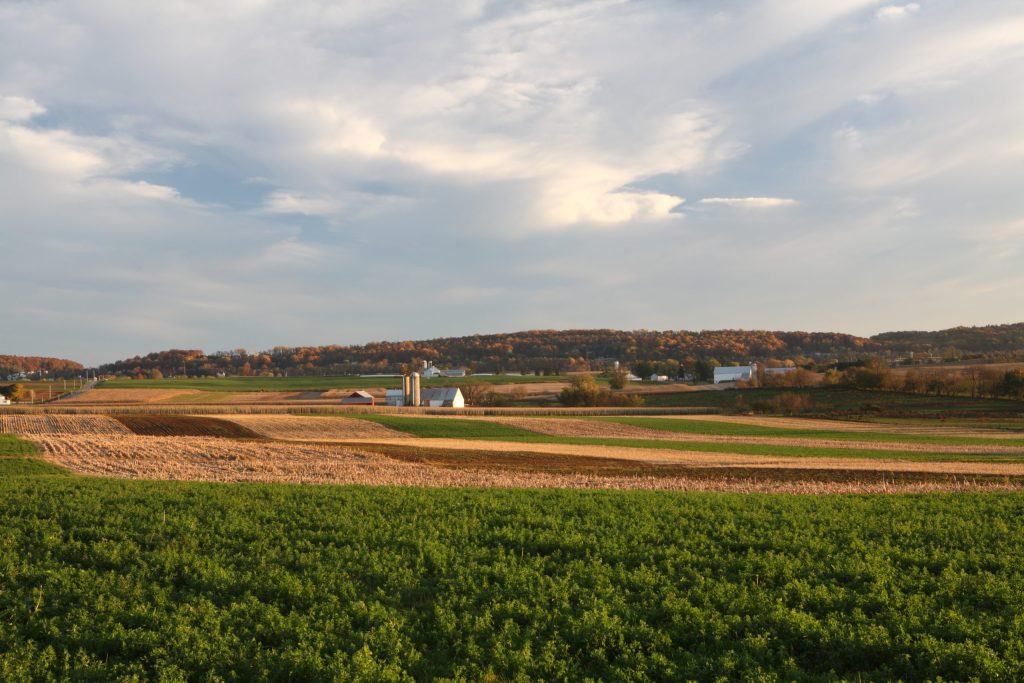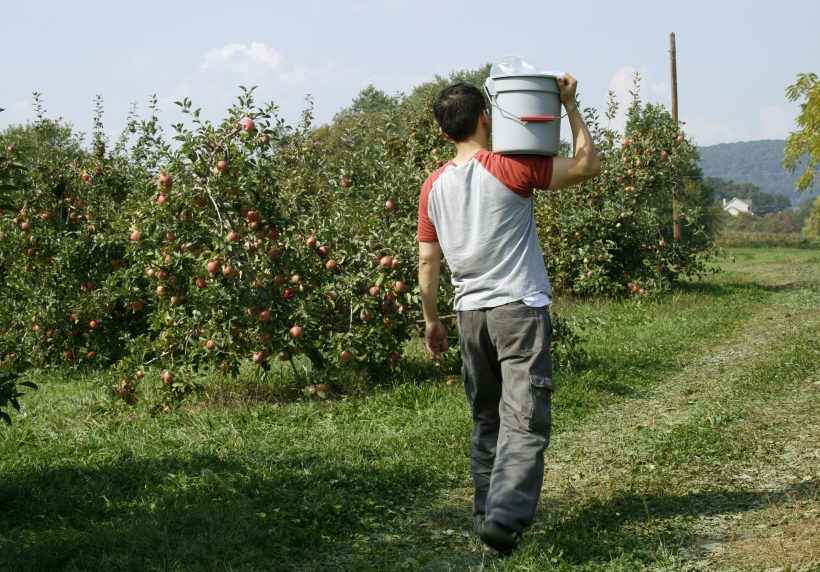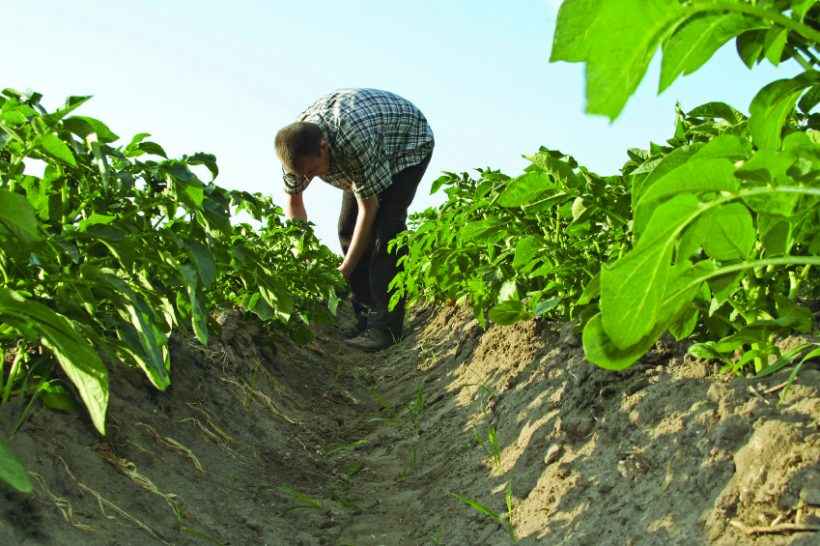Resources
Attachments: Feed Mill Truck Disinfection Log, Minimum Biosecurity Requirements
USDA Checklists
NPIP Checklist
National Poultry Improvement Plan
PADLS
Pennsylvania Animal Diagnostic Laboratory System
Sampling and Submission Instructions under “Sampling” tab below.
Grant Program
Recovery Reimbursement Grant Program
The Pennsylvania Department of Agriculture (PDA) administers the Highly Pathogenic Avian Influenza (HPAI) Recovery Reimbursement Grant program “to provide reimbursement to farms, integrators, and allied industries directly impacted by HPAI by suffering demonstrable financial losses due to inclusion in a control or quarantine zone.”
The HPAI Reimbursement Grant program is comprised of two rounds:
Round One
Round one is open “to poultry farmers and integrators and to only those premises located in the 3-kilometer infected zones as defined by the Pennsylvania Department of Agriculture’s General Quarantine Order. Round one applications are due by September 10, 2022.”
Round two
Round two “is now open to those who suffered losses in the Control Zones. The second round is open to any business or poultry farm location affected by the Pennsylvania Department of Agriculture’s General Quarantine Order. Round two applications are due by October 8, 2022.”
For more information on program guidelines and how to apply, click the following link:
Highly Pathogenic Avian Influenza Recovery Reimbursement Grant
Follow @PFBRegAffairs on Twitter for continuing updates on environmental, food safety, and other regulatory activities affecting Pennsylvania farmers, as well as on Pennsylvania Farm Bureau’s efforts to advance the regulatory policy goals set by our members.
Protect Your Flock
Now is the Time to Protect Your Flock Against Avian Flu
Center for Poultry & Livestock Excellence Pennsylvania
HPAI Detected in Northampton County
A case of avian flu has been detected among a backyard flock of ducks and chickens in Upper Mount Bethel Township, Northampton County. This is the first case of avian flu detected in Pennsylvania in weeks and is notable because it is the first confirmed case in the state among a noncommercial backyard flock, according to the Pennsylvania Department of Agriculture (PDA). Ducks and chickens in the flock were confirmed to have been infected by a turkey vulture that died on the property. Wild birds are known to be vectors for avian flu infections. As a result of the confirmed case, PDA quarantined the farm and established a 10-kilometer (about 6- mile) control area around the farm. Poultry owners within the control area are subject to testing requirements and must have permits to transport products. Work is also underway to clean and disinfect the farm and safely dispose of potentially infected material. Additionally, anyone within 3 kilometers, or nearly 2 miles, of the infected farm may not transport poultry or egg products. Some parts of New Jersey are also subject to the control area and the state is working in conjunction with New Jersey agriculture officials to identify and notify other poultry and egg producers and backyard bird owners in the area. Backyard bird owners and poultry and egg producers should stay vigilant, especially as wild bird migration season picks up again in the coming weeks, and take the following steps:
- Practice excellent biosecurity every day.
- Wear clean clothes and scrub boots or shoes with disinfectant and wash hands before and after contact with animals.
- Keep equipment and vehicles clean, including all those entering your property.
- Control birds and rodents who can carry and spread disease.
- Keep birds inside whenever possible and minimize the chance of contact with wild birds.
- Clean under barn soffits and eliminate possible entry points for wild birds.
- Eliminate standing water that might attract wild birds.
If you suspect HPAI in your flock
Call the PDA hotline immediately. Do not move the birds. There is no penalty for calling and testing for surveillance is free. Pennsylvania Department of Agriculture (PDA) emergency number 717-772-2852 (press option 1 to reach the veterinarian on call).
Biosecurity Requirements
Minimum Biosecurity Requirements for Feed Mill and Feed Delivery Trucks
April 25, 2022 Penn Ag
These biosecurity requirements must be followed if:
- The feed mill is within a Control Area for Highly Pathogenic Avian Influenza (HPAI) AND/OR
- The poultry farm receiving a feed delivery is within a Control Area
FEED MILL:
- The feed mill must have a wild bird and rodent control program which includes regularly cleaning spilled feed.
PERSONNEL:
- Feed truck drivers must not enter any poultry house and must remain outside for the connection to the feed bin.
- Feed truck drivers should not own or interact with birds of any kind, including backyard or pet birds.
- Drivers must disinfect footwear (e.g., Lysol) prior to entering the truck at the feed mill.
- Drivers must wear disposable boot covers or disinfect footwear prior to exiting the truck. If wearing disposable boot covers, remove before re-entering the truck. Whether wearing boot covers or not, always disinfect footwear prior to entering truck.
- Disposable boot covers must be discarded at the farm or feed mill prior to re-entering the vehicle.
- Hands must be sanitized when entering the truck at farms and feed mill.
- Interior of truck cabs (e.g., floorboards, pedals, steering wheel, gear shifts, door handle) must be disinfected before leaving the farm and at the feed mill.
FEED DELIVERY TRUCKS:
- Feed trucks must have a full truck wash with soap and water at least weekly with no organic debris remaining.
- The undercarriage of feed trucks must be cleaned with soap and water at least daily with no organic debris remaining.
- Trailer lids on feed delivery trucks must be kept closed except when loading or sweeping after unloading. This minimizes the potential of bird droppings falling into the feed or trailer.
- A disinfectant* log must be maintained for each truck (see example disinfectant log).
- Truck and trailer undercarriage disinfection includes complete saturation and at least 2 complete
tire rotations or 1 minute of disinfection pump “on” time, using an approved disinfectant effective
against Avian Influenza prepared and handled according to product label directions.
- When exiting the feed mill, the undercarriage of trucks and trailers (including tires, wheel wells, mud flaps and cab entry steps) must be disinfected.
- When entering poultry farms for feed delivery, the undercarriage of trucks and trailers (including tires, wheel wells, mud flaps and cab entry steps) must be disinfected.
- When exiting poultry farms, the undercarriage of trucks and trailers (including tires, wheel wells, mud flaps and cab entry steps) must be disinfected.
- When entering the feed mill, the undercarriage of trucks and trailers (including tires, wheel wells, mud flaps and cab entry steps) must be disinfected.
- Minimize the delivery of split loads (i.e., delivery to multiple farms without returning to the feed mill).
- Permitted feed delivery to any infected premises requires a complete cleaning and disinfection of the truck and trailer prior to leaving the premises.
* Disinfectants must be approved and effective against avian influenza
APHIS Message
PA State Veterinarian Dr. Kevin Brightbill urged poultry farmers to follow the guidelines set forth in the 2015 Interstate and General Quarantine Order; Virus Control for Highly Pathogenic Avian Influenza Vehicle, Container and Material Standards. The order lays out steps that poultry facilities can take to prevent HPAI and to help stop the spread of HPAI. The restrictions within the order apply to any conveyance or vehicle, container or material, live or unprocessed goods or products of poultry.
With the recent detections of the HPAI in wild birds and domestic poultry in the United States, bird owners should review their biosecurity practices and stay vigilant to protect poultry from this disease. APHIS has said that it is working closely with state partners on surveillance, reporting, and control efforts.
The United States Department of Agriculture’s (USDA) Animal and Plant Health Inspection Service (APHIS) has confirmed multiple cases of highly pathogenic avian influenza (HPAI) in birds in multiple states, including Delaware, New York, Maine, Michigan, Virginia, Iowa and Kentucky.
In addition to practicing good biosecurity, the USDA encourages bird owners to prevent contact between their birds and wild birds and asks the bird owners report sick birds or unusual bird deaths to state and federal officials, either through their state veterinarian or through APHIS’ toll-free number, 1-866-536-7593. APHIS strongly suggests that owners bring birds indoors, when possible, to further prevent exposures.
APHIS has materials about biosecurity, including videos, checklists, and a toolkit available here.
For more information on confirmed cases and background information on Avian Influenza, click here.
For more information, resources, and the latest developments in the fight against HPAI, go to the Penn State Extension, here.
Sampling
HPAI SAMPLING AND SAMPLE SUBMISSION INSTRUCTIONS
Approved Sample Collectors
Samples for regulatory testing (testing for HPAI surveillance, movement, or program purposes) may be collected only by the following:
- A Certified Poultry Technician licensed in PA
- A PDA-trained HPAI Sampler (May only collect samples from flocks for which they were approved by PDA and may only collect samples from a flock located within a control area or surveillance zone)
- An accredited Veterinarian
Required Testing
- For commercial flocks located in a Control Area (Infected and Buffer Zones (1-10 km)) and a Surveillance Zone (10-20 km), weekly testing (every 5-7 days) is required regardless of movement.
- Commercial poultry definitions for surveillance testing if located within a PA HPAI Control Area or
Surveillance Zone are as follows:Commercial flocks are defined as:
- Layers/layer pullets: Raise 75,000 birds or more
- Broilers: Raise 100,000 birds/year or more
- Turkeys: Raise 30,000 birds/year or more
- Waterfowl, Game birds: Raise 25,000 birds/year or more
- Breeder flocks: Have 5,000 breeder birds or more
- Associated with a company ownership or management, regardless of flock size
- If moving product out of, within, or into a Control Area, additional testing may be required per the
Secure Poultry Supply Plans. To find testing requirements for movement, please refer to the Secure Poultry
Supply Plans and verify the requirements with PDA. Moving Poultry and Poultry Products | SECURE POULTRY SUPPLY
(umn.edu). Check with PDA for additional requirements for movement of waterfowl.
- Movement of commercial or backyard poultry or poultry products out of, within, or into a Control Area is by permit only. The USDA EMRS Gateway is recommended for anyone who needs a movement permit. Instructions for applying for a permit are located under the Permitting tab on the PADLS website PADLS HPAI Permitting Information. You can reach the permitting section with questions by email at: RA-AG-PAPERMITS@pa.gov
Number of Samples Required for testing Healthy Flocks
*Gallinaceous birds (chickens, turkeys, game birds):
- Weekly HPAI Surveillance Testing: 22/house for gallinaceous birds (2 tubes/house)
- Testing for Movement: Follow the appropriate Secure Poultry Supply Plan Moving Poultry and Poultry Products | SECURE POULTRY SUPPLY (umn.edu
Always swab fresh dead birds first, then sick birds, then healthy birds to get the necessary number of swabs. Swabs from dead and sick birds can be combined in a tube, but swabs from healthy birds should be placed in a separate tube. Label the tubes or include on the sub form to indicate which birds are represented in the tube. Also label tubes if you are sampling different species so the lab knows which bird type they are testing.
When swabbing gallinaceous species (chickens, turkeys, game birds) swab up to 11 birds per tube of
BHI broth, swirl the swabs in the broth, squeeze them against the side of the tube, and remove
the swabs from the tube of BHI. Do not leave any swabs in the tube. Dispose of the swabs
properly.
Your weekly test must be done every 5-7 days. If this time frame matches your plans for
movement, you can use your movement testing as your weekly test, if you check the correct purposes of test
on the submission form.
*Waterfowl (Cloacal swabs):
- Weekly Testing: 35/house for waterfowl (7 tubes/house)
- Testing for Movement: 35/house for waterfowl (7 tubes/house). Check with PDA for additional movement requirements for waterfowl.
Always test fresh dead birds first, then sick birds, then healthy birds to get the necessary number of swabs. Swabs from dead and sick birds can be combined in a tube, but swabs from healthy birds should be placed in a separate tube. Label the tubes or include on the sub form to indicate which birds are represented in the tube. Also label tubes if you are sampling different species so the lab knows which bird type they are testing.
When swabbing waterfowl, swab up to 5 birds of one species per tube of BHI broth, and leave the swabs in the tube. Break the handles off close to the swab end so the lid can be closed tightly.
Your weekly test must be done every 5-7 days.
Sample Submission
A completed submission form must accompany all samples for testing. The High Path Avian Influenza PCR Submission Form shall be used (only) for samples collected from a flock located within a control area or surveillance zone.
To reduce the risk of cross-contamination, samples should be placed in a clean cooler with ice packs and then handed off at the end of the farm lane to someone who has not been around poultry, and is driving a clean vehicle. Samples can be removed from the farm cooler and the driver can place them in a clean cooler kept in the vehicle for delivery. Samples should be taken to a drop-off site whenever possible to avoid possible cross-contamination at the labs. Samples delivered to a drop-off site by 10 AM may have same-day PCR results.
If you cannot make it to a drop -off site by the cutoff time, you can contact any of the PADLS labs to make
a biosecure drop-off at the lab. If that is not possible, refrigerate your samples for next-day drop-off.
When not refrigerated, transport BHI tubes upright on ice packs in a clean cooler.
The following sites
are available for sample drop-off:
| LOCATION | ADDRESS | HOURS |
The PADLS laboratories will offer weekend hours on the following schedule:
| Dates | Open Lab | HOURS |
New Jersey
Attachments
State of New Jersey Letter to Poultry Distributor
Importation of Poultry from PA into the LBMS JAN 2023
DEPARTMENT OF AGRICULTURE
Division of Animal Health
PO BOX 400
TRENTON
NJ 08625-0400
PHILIP D. MURPHY, Governor | SHEILA Y. OLIVER, Lt. Governor | DOUGLAS H. FISHER, Secretary
January 31, 2023
Dear Registered Poultry Distributor:
The United States Department of Agriculture (USDA) Animal and Plant Health Inspection Service (APHIS) and the Canadian Food Inspection Agency (CFIA) continue to confirm highly pathogenic avian influenza (HPAI) in several states and Canadian provinces. On January 30, 2023, the Pennsylvania Department of Agriculture established a 10 km control zone around an HPAI detection in Lancaster County, Pennsylvania. As you are aware, Pennsylvania supplies most of the birds entering the New Jersey Live Bird Markets. Due to the detection of HPAI, the New Jersey Department of Agriculture (NJDA) once again considers the State of Pennsylvania to be affected. As a reminder, pursuant to N.J.A.C. 2:3-7.4 (b) Avian Influenza:
No poultry, or hatching eggs originating from a state, territory, or country where Highly Pathogenic Avian Influenza (HPAI) has been detected, shall be imported into New Jersey for live bird markets unless:
- The poultry or hatching eggs are approved and provided a permit by the State Veterinarian, and
- The poultry or hatching eggs meet testing requirements as follows:
-
- All poultry shall originate and move directly from an established flock in which a minimum of 30 bids, seven days of age and older, were tested negative for Avian Influenza using real-time reverse transcriptase-polymerase chain reaction (rRT-PCR1). If the flock contains less than 30 birds, all birds from within the flock must be tested.
-
(1.) rRT-PCR testing is accepted for all gallinaceous poultry and domestic ducks. The date of sample collection must be within 72 hours before the date of entry into New Jersey, and the shipment must be accompanied by a copy of the finalized laboratory report indicating that the poultry tested negative for Avian Influenza.
Poultry purchased from production/supplier flocks in any state, territory, or country where HPAI has been detected, and the poultry is destined for the New Jersey Live Bird Marketing System require a permit issued by the New Jersey State Veterinarian and a negative avian influenza test within 72 hours of movement. The State Veterinarian must issue the permit before moving such poultry into the State of New Jersey.
For your reference, this document is located on the Division of Animal Health’s website:
https://www.nj.gov/agriculture/divisions/ah/pdf/Permitting%20Procedure%20for%20Poultry_HPAI_2022.pdf
Please be advised that poultry shipments moving into multiple Live Bird Markets must have each destination included on subsequent pages.
State and/or federal inspectors will continue to perform routine inspections and sampling for Avian Influenza at your facility. If you have any questions, please contact the Division of Animal Health at (609)-671-6400.
Sincerely,
Amar Patil DVM, MVSc, PhD, Diplomate ACVM
Director, Division of Animal Health/ NJ State
Veterinarian
Electronic Enclosures
Cc: New Jersey Live Bird Market Owners
New Jersey Is An Equal Opportunity Employer • www.nj.gov/agriculture
FAQ’s
HPAI Control Area Release FAQs
May 20, 2022
What does it mean when a Control Area is released?
A Control Area is established when HPAI is detected in poultry, and it is released when certain conditions are met. Poultry on farms that are not under quarantine and are located outside the remaining Control Areas are no longer subject to movement controls and surveillance testing activities. When a Control Area is released, Pennsylvania producers should check the Control Zone Address Checker to determine if a particular address is still within a Control Area.
Which Control Area(s) have been released?
Information on the Control Areas that have been released and those that remain active can be found on the APHIS HPAI 2022 Confirmed Detections website. It’s important to note that Control Areas associated with neighboring infected farms may overlap with a released Control Area. Any farms located within the overlapping Control Areas are still subject to restrictions until the status changes. You can check the Control Zone Address Checker to determine if a particular address is still subject to restrictions.
Can farms that are now outside a Control Area resume normal farming practices?
Farms that are outside a Control Area are not subject to movement controls and surveillance testing activities unless they are under quarantine. However, all farms, regardless of location, should continue to implement strict biosecurity procedures to help keep birds healthy and stop the spread of HPAI.
Can birds be restocked at infected premises that were within the released Control Area?
Not yet. Before birds can be restocked, the infected premises must meet all requirements of the flock plan, including quarantine release and negative results on environmental testing. They must also be outside the infected zone of another flock.
What does it take to get a Control Area released?
To be released, all infected premises within the Control Area must have completed 100% depopulation and disposal of birds, feed, litter/manure, and eggs in accordance with the flock plan. Initial virus elimination and surveillance testing must also take place. If there are no positive results on surveillance within the Control Area for 14 days after depopulation and virus elimination, the Control Area can be released.







